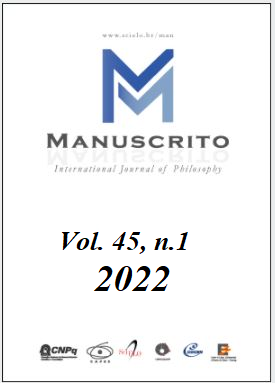Resumo
Sign-based semantics and embodied semantics are argued to be mutually beneficial to one another. However, while the body does shape our cognitive activities to a great extent, this does not entail that cognition can be reduced to sensorimotor simulation, i.e that the mind can be reduced to the body. Language itself bears testimony to this, as the mind is construed in ordinary discourse as having the incredible capacity of being free to travel beyond the limits of present time and current spatial location. Nagel has argued famously that mind is a fundamental datum of nature that the materialist version of evolutionary biology is unable to account for, as consciousness has an essentially subjective character to it, a ‘what it is like for the conscious organism itself’ aspect, that cannot be reduced to the matter of which the organism is constituted. Two modern scientific developments refute the contention that the human mind can be explained as a purely material machine: quantum theory in physics and Gödel’s Incompleteness Theorem in mathematics. Just because the mind works through the body does not entail that the mind can be reduced to the body.
Referências
Barr, S. M. (1995), “The Atheism of the Gaps”, First Things, November 1995.
Barr, S. M. (2007), “Faith and Quantum Theory”, First Things, March 2007.
Duffley, P. J. (2019), “What’s on Your Mind Is Not on Your Brain - Hopefully”, Odisea, 20, 65-73.
Lakoff, G. and M. Johnson (1980), Metaphors We Live By, Chicago, University of Chicago Press.
Lakoff, G. (1987), Women, Fire, and Dangerous things: What Categories Reveal about the Mind, Chicago, Chicago University Press.
Lakoff, G. and M. Turner (1989), More Than Cool Reason: A Field Guide to Poetic Metaphor, Chicago, University of Chicago Press.
Lakoff, G. and M. Johnson (1999), Philosophy in the Flesh The Embodied Mind and Its Challenge to Western Thought, New York, Basic Books.
Langacker, R. W. (1987), Foundations of Cognitive Grammar, Volume 1, Stanford, Stanford University Press.
Langacker, R. W. (2000), Grammar and Conceptualization, Berlin and New York, Mouton de Gruyter.
Meurer, C. F. (2022), "Could Sign-Based Semantics And Embodied Semantics Benefit One Another?", Manuscrito, v. 45, n. 1, 123-144.
Nagel, T. (1986), A View From Nowhere, Oxford, Oxford University Press.

Este trabalho está licenciado sob uma licença Creative Commons Attribution 4.0 International License.
Copyright (c) 2022 Manuscrito: Revista Internacional de Filosofia


